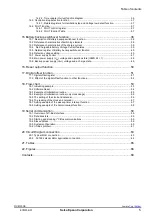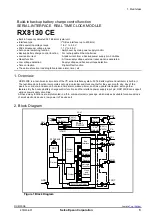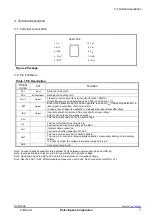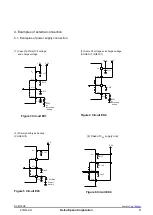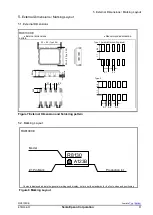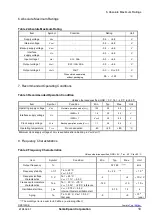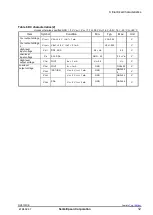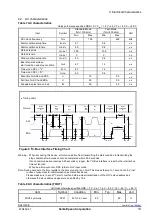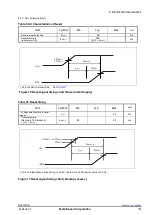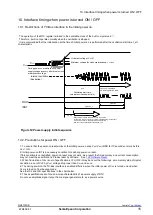
13. Overview of Functions and Registers
RX8130CE
Jump to
ETM50E-07
Seiko Epson Corporation
19
13. Overview of Functions and Registers
Note:
The initialization of the register is necessary about the unused function.
13.1. Overview of Functions
1) Clock functions
This function is used to set and read out second, minute, hour, day, month, year ( to the last two digits), and
date data.
Any (two-digit) year that is a multiple of 4 is treated as a leap year and calculated automatically as such until
the year 2099.
At the start of a I
2
C communication, the time and clock counting stops (which causes loss of time), and clock
starts automatically again at the end of the I
2
C communication.
2) Wakeup Timer Interrupt function
The wakeup timer interrupt function generates an interrupt event periodically at any wakeup set between
244.14
s
and 65535 hours
.
When an interrupt event is generated, the /IRQ pin goes to low level and "1" is set to the TF bit to report that an
event has occurred.
3) Long-Timer function
It is able to use wakeup timer interrupt function as Long-Timer or usage counter.
This function measures the operation time on the main power supply and the operation time on the backup
power supply and can automatically sum them up.
4) Alarm interrupt function
The alarm interrupt function generates interrupt events for alarm settings such as date, day, hour, and minute
settings. When an interrupt event occurs, the AF bit value is set to "1"
and the /IRQ pin goes to low
level to
indicate that an event has occurred.
5) Time Update Interrupt Function
The time update interrupt function generates interrupt in one-second or one-minute intervals which are
synchronized to the update of the second or minute time register of the RTC When an interrupt event is
generated, the /IRQ pin goes to low level and "1" is set to the UF bit to report that an event has occurred.
6) Frequency stop detection function
This flag bit indicates the retained status of clock operations or internal data. Its value changes from "0" to "1"
when data loss might have occurred due to a low supply voltage.
7) Clock output function
A clock with the same frequency (32.768 kHz) as the built-in crystal resonator can be output from the FOUT pin.
Output could also be 1 Hz, or 1024 Hz.
8) User RAM
RAM register is read/write accessible for any data.
9) Digital offset function
The clock precision can be increased by adding a time offset.

